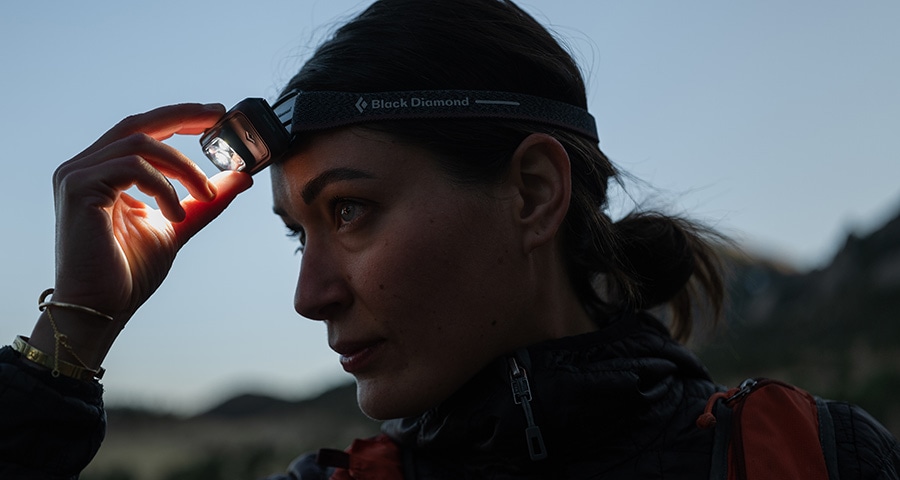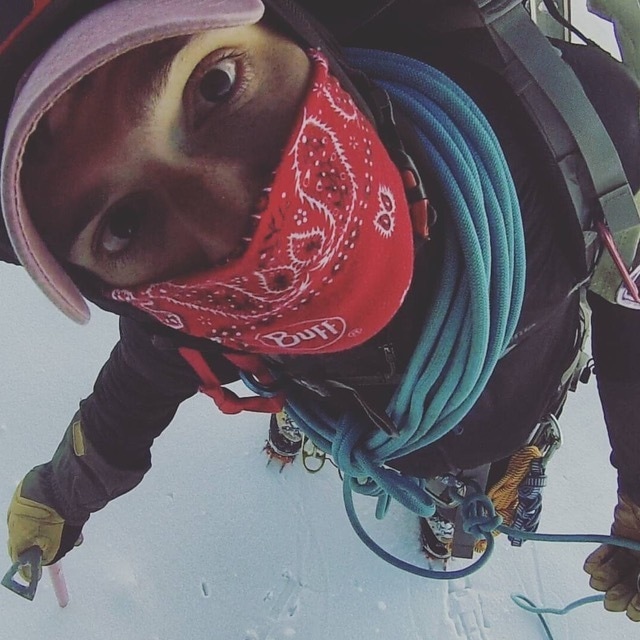Headlamps are important tools that help lengthen your days outside, allowing you to have fun after dark and see places you couldn't otherwise, and they serve as a safety net in case something goes awry. That's why picking the right one is critical. Depending on your outdoor needs, you'll want to weigh the balance of brightness, battery life, features and comfort, but know that these handy (and hands-free) torches are more powerful and affordable than ever before.
We spent two seasons field testing more than 16 models in all sorts of darkness during a variety of activities. The result? These 8 'lamps, which will serve every user and budget.
The 8 Best Headlamps of 2025: Test Results
For quick recommendations, check out the results of our round-robin here, or scroll down for in-depth reviews.
- Black Diamond Spot 400 Headlamp - REI Co-op Editors' Choice Award Winner
- Petzl Actik Core Headlamp - REI Co-op Editors' Choice Award Winner
- Black Diamond Astro 300-R Headlamp - REI Co-op Editors' Choice Award Winner
- Petzl Swift RL Headlamp
- Black Diamond Deploy 325 Headlamp
Other Top Performers
Editor's note: We updated this guide on November 10, 2025, to include the latest versions of the REI Co-op Editors' Choice Award–winning Petzl Actik Core Headlamp and Petzl Tikkina Headlamp.
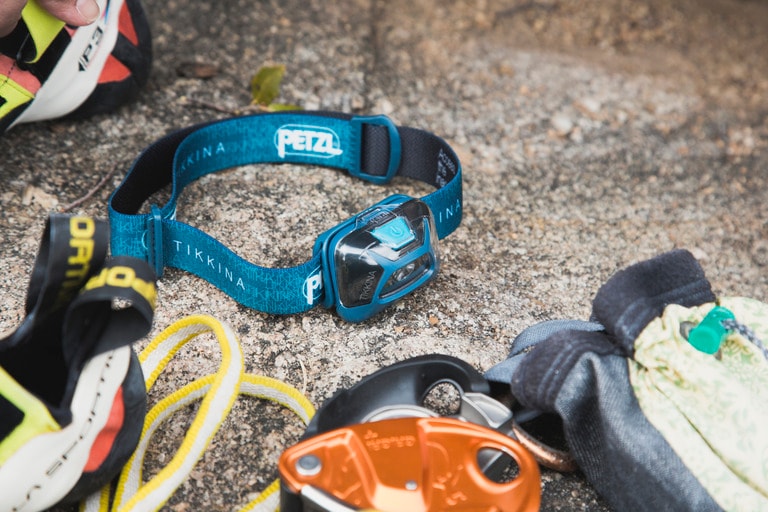
Best Overall Headlamp & Editors’ Choice Award Winner
Black Diamond Spot 400 Headlamp
Score 97
Weight (with batteries) 2.7 ounces
Batteries 3 AAAs; also compatible with BD 1500 mAh rechargeable (not included)
Max brightness 400 lumens
Max burn time on lowest setting 200 hours
After 10 long nights, five alpine starts and several summits, few headlamps would still be humming along like the Black Diamond Spot 400. For one Washington-based tester, it was a sunset-to-sunrise standby, reliably giving him the light he needed throughout a summer testing blitz: bivying along the West Ridge of the Cascades' Forbidden Peak [Yamakiasham Yaina], slurping down a bag of dehydrated pad thai or reading a book at camp. It's not a unique story for the Spot 400, which became a quick favorite among our crew of testers for its best-in-test versatility, earning it an Editors' Choice Award.
The lumens—an update over last year's Spot 350—are plenty for technical predawn climbs where seeing detail at a distance is crucial. While other lamps have set brightness levels, the Spot 400 is instantly dimmable: Hold the large button to dim the light to the exact brightness you want. When turned off, the lamp remembers its most recent brightness, so you don't need to reset it every time.
Our mountaineering tester liked being able to tap the side of the light with a finger to get a burst of the maximum brightness for quick looks down the trail without losing his settings; a tap on the same pad switches the Spot 400 back to its previous brightness. Such touches are user-friendly and intuitive, while also saving battery life—the 200-hour burn time is tops among the models tested. (Confused about burn time? You're not alone. The standard is nuanced and changing; read more about it and other headlamp specs here.)
The Spot 400 has two beams that put out light either in proximity (a wide dim beam) or in spot form (a narrow bright beam). A separate button on top of the housing switches between these modes. The headlamp also has a red light for preserving night vision; an easy-to-read battery-life indicator; and Black Diamond's beloved locking function, so it won't turn on in your pack or in storage. Supertough IPX8 waterproofing means the lamp will work at more than 1 meter underwater for 30 minutes. In other words, precip and spills are no match for the Spot.
USB lovers will appreciate that the Spot 400 is compatible with Black Diamond's 1500 mAh rechargeable battery pack, boosting versatility. Rhe light also comes in the comparable Spot 400-R model, which is rechargeable out of the box. While most of the 400-R headlamp is identical to the 400, it does have a USB input on the side and slightly better battery run times, lasting an average of 225 hours in its dimmest mode. It's a little more expensive, though, at $64.95. Buy here.
Bottom Line: Burn time, brightness and comfort all come at a great price in the Black Diamond Spot 400, making it the best all-around lamp for hiking, climbing and cleaning your shed.
Testing Stats:
- Nights out: 57
- Testing states: California, Colorado, Minnesota and Washington
- Best testing story: The Spot led our tester to an all-time great bivy on the West Ridge of Forbidden Peak: "When the sun came up, our jaws dropped."
Most Versatile Headlamp & Editors’ Choice Award Winner
Petzl Actik Core Headlamp
Score 95
Weight (with battery) 3.1 ounces
Battery Lithium-ion Petzl Core or 3 AAAs
Max brightness 625 lumens
Max burn time on lowest setting 100 hours
No AAAs, no problem. The Actik Core from Petzl comes preloaded with a superlight lithium-ion Petzl Core battery that pumps out usable light for days. Between trips and uses, plug the Core battery into a wall, computer or power bank via its integrated USB port to keep the lamp fully juiced so you're always leaving the trailhead at 100%. When one tester had back-to-back trips in Colorado's Indian Peaks and Wyoming's Wind River Range, he was able to refresh the battery in his car in the time it took to drive to the next trailhead. "As the sun set in the parking lot outside the Bridger Wilderness, I unplugged and went right back to work for a night hike through the trees," he said.
A single, easy-to-press button makes it simple to cycle through the three brightness levels and red light—the perfect increments for everything from packing bear canisters in predawn darkness at camp with the 7-lumen low setting to hauling water from a lake for dinner dishes with the powerful, 625-lumen setting. The brightest beam of the test from a lamp without a separate batter pack, this Editors' Choice Award Winner was even powerful enough to let one tester count the branches on trees across the alpine lake where he camped. A long press of the button switches the Actik Core to red light and an even longer press locks it before you stick it in your pack.
The Actik Core's features are rounded out with an IPX4 rating to keep it safe from splashes. It's also compatible with AAAs, so you can pop spares into the housing or carry-on airplane travel or in a pinch on longer trips (you do carry spare batteries with you, right?). Buy here.
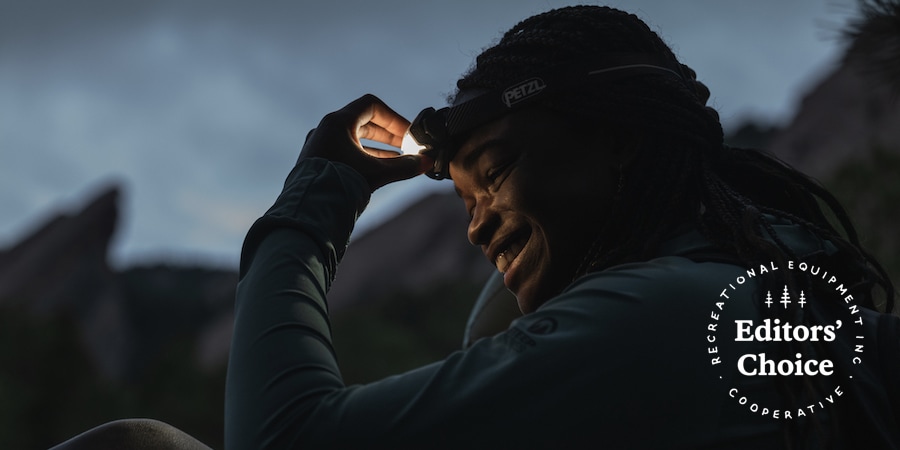
Bottom Line: The 625-lumen Petzl Actik Core offers blinding light, and because it's rechargeable, it could save you money on batteries, as well as the frustration of a dead lamp.
Testing Stats:
- Nights out: 27
- Testing states: Colorado, Idaho, New York, Washington and Wyoming
- Best testing story: The Actik Core helped one tester shoot star photos from inside the Impassable Canyon along the Middle Fork of the Salmon River.
Best Budget Headlamp & Editors’ Choice Award Winner
Black Diamond Astro 300-R Rechargeable Headlamp
Score 95
Weight (with batteries) 2.65 ounces
Batteries 1500 mAh lithium-ion
Max brightness 300 lumens
Max burn time on lowest setting 140 hours
"Budget" doesn't automatically mean bad, as proven by the Astro R from Black Diamond. Testers found it impressively bright at its medium and high settings—"Well worth avoiding accidental eye contact," said one—and its low setting is enough for close work and will give you almost a week of use (up to 140 hours) before needing a charge. "This brightness with this battery life feels like a steal at the price," another tester said. The battery level is easy to monitor too: Three blue LEDs quickly show the available power.
One tester loved the headlamp's easy-to-use single-button control with dimming and strobe capabilities and was especially impressed with the memory feature: "The lamp keeps the same dimness level you had it set to when turning off and back on," which customizes the experience and saves time. A handy digital lockout setting preserves batteries when the headlamp is packed or stashed, and the recycled elastic headband offers wearable, adjustable comfort. Overall, the Astro 300-R is a powerful package for the price. Buy here.
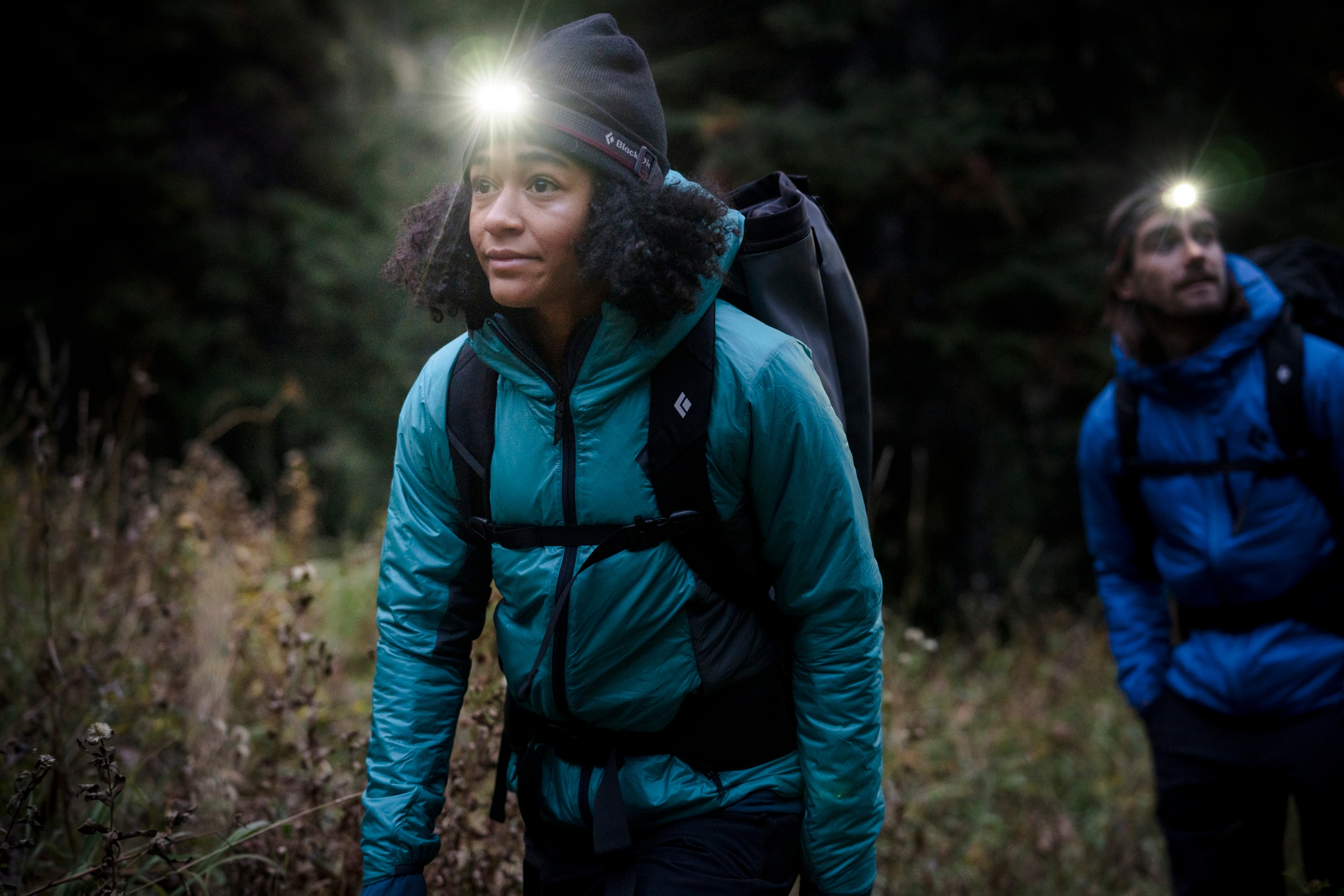
Bottom Line: For overnight ultrarunners, campers or backpackers to want performance at a friendly price, the Astro 300-R lights the right way.
Testing Stats:
- Nights out: 22
- Testing states: Minnesota, New York
- Best testing story: One tester took this headlamp with them to New York, where they wore it on a nighttime walk. "I have to say that until I put this headlamp on at full brightness, I had no idea how much freaking dust was just floating around in the air!"
Petzl Swift RL Headlamp
Score 91
Weight (with batteries) 3.5 ounces
Batteries 1 lithium-ion 2350
Max brightness 1100 lumens
Max burn time on lowest setting 50 hours
For versatility and power out of the box, it's tough to beat the Swift RL from Petzl. A whopping 1100 lumens make it one of the brightest headlamps around (the equivalent of the low beam on most cars or a 75-watt lightbulb), while a maximum distance of 154 meters ensures you'll have ample visibility on the trail and around camp all night. One tester noted that the Swift RL "is super easy to use" with its one-button control, making it perfect for situations where you want maximum light and versatility without distractions: Quickly toggle between bright white, continuous red for night vision or strobe red lighting for emergencies. At 3.5 ounces, it's not the lightest on the list, but the sleek design gives it a barely-there feel. The snug, adjustable headband (with reflective strips) keeps it securely in place—and can be detached and washed, to boot.
The RL stands for the lamp's "Reactive Lighting" technology, a sensor that analyzes ambient light and automatically adjusts the headlamp's brightness. Testers noted that the setting drained the headlamp's rechargeable battery faster, but one Minnesota-based tester added that it could be difficult to get used to. "Some of my testing was in an urban setting and the lamp flickered a lot when it caught an oncoming car or streetlight. A campfire might have the same effect," they said, admitting that they preferred the continuous light settings. (Note that the Swift RL can only reach 1100 lumens in RL mode.) The swivel head's range got big kudos from testers—"It can point completely perpendicular to the ground!"—and come in handy when you're setting up camp after a long day on the trail (or breaking down before dawn). The Swift RL is the most expensive light on the list, but when you need dependable, supercharged headlamp that will easily light up the backcountry, it's the one we'd reach for. Buy here.
Bottom Line: Comfortable and versatile with max brightness equal to a car's low beam, you won't miss anything at camp or on trail with the Petzl Swift RL.
Testing Stats:
- Nights out: 16
- Testing states: Minnesota
- Best testing story: "During my testing period, I had to change a fog light bulb on my truck—at night. The swivel range was super handy as at times I was above the truck looking down or under the truck looking up."
Black Diamond Deploy 325 Headlamp
Score 93
Weight (with batteries) 1.4 ounces
Batteries Li-ion
Max brightness 325 lumens
Max burn time on lowest setting 30 hours
Simplicity is key when you're knocking out miles, and that's where the Deploy 325 from Black Diamond excels: It's a no-frills headlamp without complicated settings to slow you down. Nobody wants to add weight when they're lacing up; at just 1.4 ounces, this super-lightweight powerhouse is so secure and easy to wear that some of our testers simply forgot they were wearing it when they finished a run. "This headlamp is so light and comfortable it's easy to forget you have it on—which I did when I came inside one night and accidentally blinded my partner momentarily," said one. Another remarked that the headband required little to no adjustment when switching between their bare head and a stocking cap, and "there was no bouncing up and down while running" in either instance.
With a simple, solid-body design, the Deploy 325 keeps a steady light on the path ahead, as far as 7 meters on low to a whopping 53 meters on high. One reviewer who went for nighttime park runs found that the lamp was just bright enough at its lowest setting in better-lit environments and "the highest setting cut through darkness fairly well, like in pedestrian tunnels and less-developed areas." There's no red-light setting, but the Deploy does have a strobe option for emergency situations. (Testers did universally agree that the instruction manual is very difficult to understand, and figuring out how to navigate the push- or push-and-hold-button features was easier by trial and error.)
A shorter battery life is this headlamp's only major downside: One tester noted that it had enough juice for their shorter outings during the week, but not enough to get you through an overnight ultra or a camping trip. That said, the combination of price, convenience, comfort and brightness outweighed battery longevity (and the obtuse user manual). It even proved itself useful for multitasking: "The light weight and comfort, and the fact that while wearing it around the house it accidentally came in handy a couple times looking in dark cabinets and corners, has made me ponder wearing one for miscellaneous repairs and errands around the house or garage," said one Minneapolis-based tester. Buy here.
Bottom Line: A lot of light and not a lot of weight are the magic combination that makes the Black Diamond Deploy 325 our favorite headlamp for running.
Testing Stats:
- Nights out: 22
- Testing states: Minnesota, New York
- Best testing story: One tester said the headlamp was so comfortable she wore it (turned off) for a solid 10 minutes after returning from an after-dinner stroll with the dogs without even noticing—until she caught a glimpse in a hallway mirror.
Other Top Performers
Petzl Tikkina Headlamp
Score 92
Weight 3.25 ounces
Batteries 3 AAAs (or swap in a Petzl Core battery for $29.95, not included)
Max brightness 300 lumens
Max burn time on lowest setting 100 hours
The best headlamp is the one you have on you. Case in point: After one tester botched the approach to a camp in Washington's Picket Range and the day turned out longer than expected, she declared the Petzl Tikkina "a wrong turn's best friend." With the best lumen-to-dollar ratio in our test, the Tikkina spits out 300 lumens (more than enough for our tester to set up camp in the dark) for just a Jackson. But it's not a one-trick pony—the Tikkina has an IPX4 rating and three brightness levels that you toggle between by clicking through the single button. It's not powerful enough for scoping big lines from the base (and no red light), but you won't find a better bang for your buck. Buy here.
BioLite HeadLamp 800 Pro
Score 92
Weight (with batteries) 5.3 oz.
Batteries Lithium-ion rechargeable
Max brightness 800 lumens
Max burn time on lowest setting 150 hours
Yes, for most folks, 800 lumens is overkill. But for some, supernova brightness in a neat-and-tidy 5.3-ounce package is the difference between getting after it and staying home. Take our tester, who toted the BioLite HeadLamp 800 PRO on a multisport odyssey across the West. "With 800 lumens, I had enough light to confidently carve at 30 mph," he says of a night-skiing mission at Telluride Ski Resort. For spring nights in the Utah desert when he needed to see dimension across the landscape after the sun disappeared, he declared the HeadLamp 800's blinding brightness a blessing. As with its sister HeadLamp 425, the 800's power pack sits on the back of your head, so it balances better than other similarly powerful headlamps. And you don't need to worry about draining handfuls of AAAs to use it on its max settings either—seven hours on high and up to 150 on low added up to some of the best specs in test. Nice touch: This lamp boasts a tail light (flood, dimming or strobe) on the battery pack, so you can stay visible on the move. Buy here.

Black Diamond Wiz Headlamp - Kids'
Score 88
Weight (with batteries) 2.4 oz.
Batteries 2 AAAs
Max brightness 30 lumens
Max burn time on lowest setting 120 hours
Young campers need to see in the dark, too, and the Black Diamond Wiz's kid-specific features make it not only safe and easy to use, but virtually indestructible, one tester's mom declared. The water-resistant, tough plastic housing protected the Wiz from drops, haphazard packing and even one industrial child's unsupervised experiment involving a puddle. A maximum of 30 lumens might seem small compared to the other lamps in the test, but it proved plenty for one 3-year-old tester for two days of exploring Iowa's pitch-black Maquoketa Caves. Modes include a full, dimmed and strobe light, plus kids can flip through a rainbow of colored-light options with the single button. Nice touches: The light itself tilts in both directions so there's no wrong way to put it on, the elastic strap has a breakaway feature for the wearer's safety and the lamp shuts off automatically after two hours to avoid unnecessary battery drain, should Junior leave it on accidentally. Buy here.
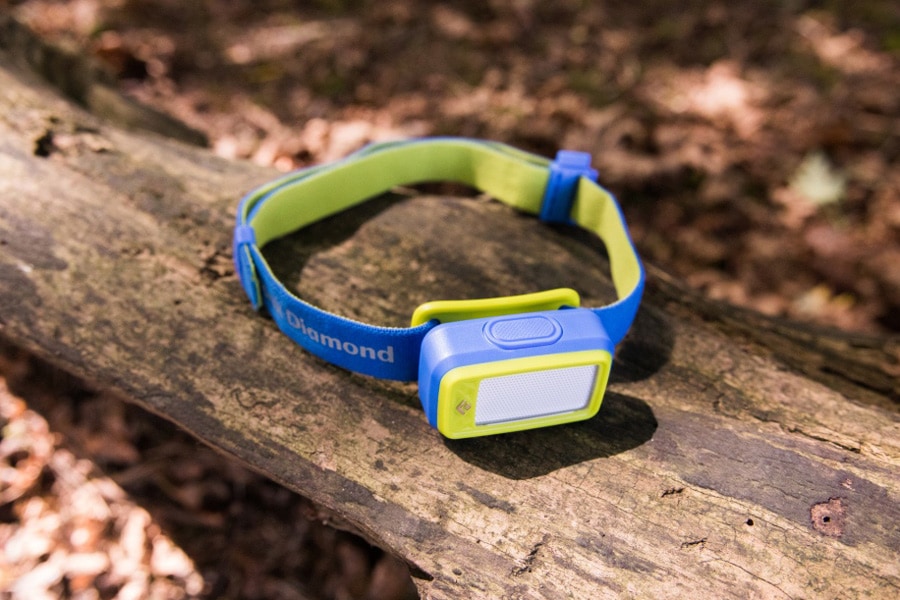

Buying Advice
Whether you're making an alpine start up a volcano or just digging through the junk in your closet, having your hands free to work while still being able to see what you're doing is key. But not all headlamps are created equal. Different features make certain lights better in certain situations, so deciding what you expect to use the headlamp for is a critical first step in choosing the right one. Lighting up the trail while you're running at night will require a very different headlamp than one you'll want for starting a fire or setting up your tent in the dark, and both of those could be different from the light you jam into the kitchen drawer for power outages.
Features
Differences in brightness, lighting modes and power source are three of the biggest differentiators in headlamps and do the most to determine how well a lamp will work for your needs.
Brightness
Brightness is the first thing everyone sees when they're searching for a new headlamp. A number of lumens, which corresponds to how bright a light is, is often part of a headlamp's name and emblazoned prominently on its packaging. The higher the number, the brighter the light.
While some headlamps boast hundreds and hundreds of lumens (cough, Petzl Swift RL, cough), you don't actually need all that many to see things close at hand. If you're only using your headlamp to read a book or look at things close-up, you can get away with 100 lumens or fewer, using something like the Petzl Tikkina. Once you want to see a little farther away—like the trail as you walk to the outhouse from camp, or whatever was making that noise in the bushes—a brightness above 300 lumens or so is more important. Lamps like the Black Diamond Spot 400, Black Diamond Astro 300-R, Black Diamond Deploy 325, Petzl Actik Core hit that sweet spot. High-speed activities like trail running or skiing that require you to see greater distances, as well as disciplines like climbing that call for seeing in higher detail, could necessitate a lamp with more brightness like the BioLite HeadLamp 800 Pro.
Keep in mind that most manufacturers name headlamps using the maximum lumen count. You can often scale back the brightness based on what you're doing. Still, brighter lights tend to need larger or more batteries (or the hardware for recharging), regardless of how many lumens you're using, which can make them heavier and bulkier.
Lighting Modes
Many headlamps give you the option to scroll through a handful of different lighting modes to customize the output. A beam or spot light is a long, narrow beam of concentrated light, perfect for peering into the dark trees around camp or to the other side of a lake. A flood or proximity light spreads the beam over a wide (but not very deep) area, perfect for cooking dinner, changing your socks or even hiking.
Many lights come with both a beam and proximity light, each with a preset brightness. If you value simple user-friendliness, go for a lamp like the Petzl Tikkina or Black Diamond Deploy 325, both of which have one button that intuitively toggles through the lighting modes. If you're techy, though, you might prefer a headlamp that lets you customize the brightness of each lighting mode to your liking, such as the Black Diamond Spot 400 or Petzl Swift RL. Fair warning: The latter can be frustrating for someone who's not willing to read the instruction manual and learn the ins and outs of their headlamp before going into the field.
Power Source
Batteries—of one kind or another—make a headlamp tick. Most headlamps run on AAA batteries or a rechargeable battery, and both have their benefits. The type of battery, typically either alkaline or lithium-ion, also has an impact.
As the batteries in your headlamp die, the light gets progressively dimmer (read more about how brands calculate burn time here). With a rechargeable battery, you can juice your lamp fully and start off every trip at 100 percent. Such lithium-ion batteries also tend to operate better than alkaline batteries in colder conditions, and they hold a more consistent brightness as they die. Plus, on longer trips you can recharge your headlamp using a power bank or even solar power.
Disposable batteries, however, are quick and easy to replace and available for purchase almost anywhere. They often hold their charge better over time if unused, making them great for emergency headlamps like the Black Diamond Astro 300-R or Petzl Tikkina.
Methodology
We passed the best-selling headlamps available at REI out to 15 testers across the Lower 48 for a round robin-style throw down. After more than 225 nights encompassing late starts, longer-than-expected days, wrong turns, multisport epics, campfire dinners, nighttime walks and plenty of charging hours, we asked them to weigh in.
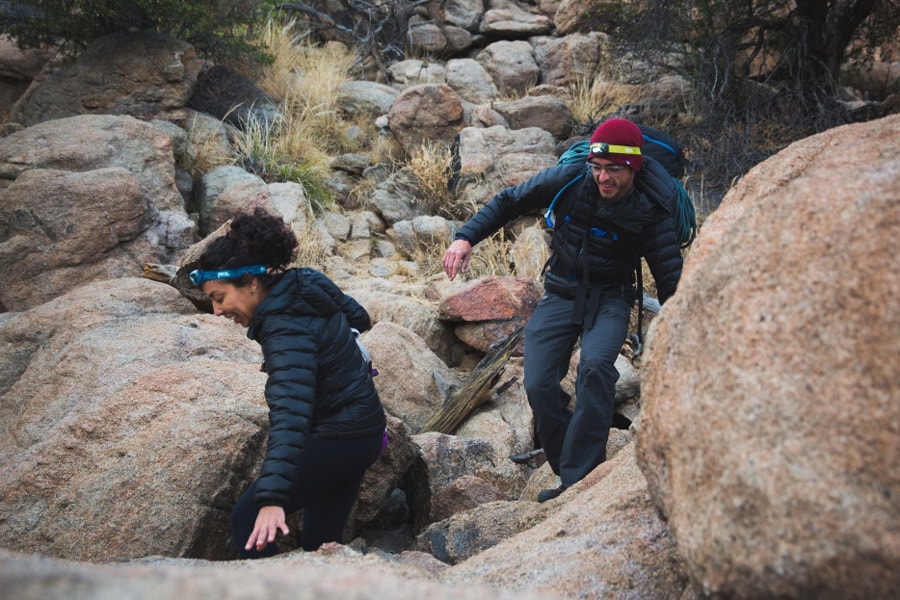
We wanted our testers to consider how useful the brightness of the headlamp is for varying outdoor pursuits; how great the headlamp's battery life is (and if it was as advertised); how comfortable the headlamp is to wear over long periods of time during different activities (on bare heads, hats and helmets); how useful (and how user-friendly) the headlamp's features are; and how expensive the headlamp is for what you get.
Our testers graded each headlamp on a 100-point scale for each criteria (brightness, battery life, comfort, features and price), then we averaged the scores to determine the seven best headlamps of the year. The Black Diamond Spot 400, Petzl Actik Core and Black Diamond Astro 300-R received top scores all-around, earning our REI Co-op Editors’ Choice Awards.
Photography by Andrew Bydlon and Joel Hopkins.
